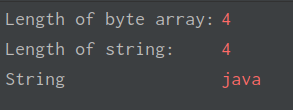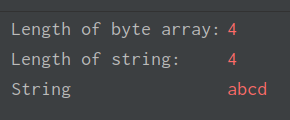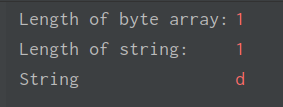字元串 字元串字面量:就是指這個字元串本身,比如"Java","Hello"。 字元串對象:比如new String("abc"),或者直接String s="str",後面的"str"也是一個字元串對象。 字元串引用:引用就是一個變數,指向對應的字元串對象。 常量池 class常量池 Java源文 ...
字元串
- 字元串字面量:就是指這個字元串本身,比如"Java","Hello"。
- 字元串對象:比如new String("abc"),或者直接String s="str",後面的"str"也是一個字元串對象。
- 字元串引用:引用就是一個變數,指向對應的字元串對象。
常量池
class常量池
Java源文件編譯之後得到的class文件,其中有項信息就是常量池,保存有字面量和符號引用,比如
public class JvmClass1 {
final int b=666;
public static void main(String[] args) {
String c="java";
String d="abcd";
}
}對應的class文件中


這一項就是666這個字面量。


這兩項就是java和abcd這兩個字元串的字面量。
而符號引用也是一些常量,比如全限定類名,欄位的名稱和描述符,方法的名稱和描述符。


這是類名。


這是變數名。
常量池中有一些常量類型有index屬性,指向另外一個字面量,比如CONSTANT_Class_Info,CONSTANT_String_Info等。
相同的字元串字面量在常量池中只會保存一份,例如
public class JvmClass1 {
public static void main(String[] args) {
String c="java";
String d="abcd";
String e="java";
String f=new String("java");
}
}運行時常量池 && 字元串常量池
class常量池被載入到記憶體後,形成了運行時常量池,Jdk1.7之前位於方法區中,Jdk1.8之後是放在元空間,或者把元空間看做是新的方法區。
運行時常量池相對於class常量池的一個特點是具有動態性,Java不要求所有常量在編譯器產生,可以在運行時產生常量加入常量池,例如String類的intern()。
String.intern
intern源碼的註解是Returns a canonical representation for the string object.,意思是返回字元串對象的規範表示形式。
第二段是A pool of strings, initially empty, is maintained privately by the class,說的就是字元串常量池,JDK1.6及以前是放在方法區中,後來放到了堆中,其中保存的是字元串對象的引用,而真正的字元串對象實例是在堆中創建。
第三段是
When the intern method is invoked, if the pool already contains a string equal to this {@code String} object
as determined by the {@link #equals(Object)} method, then the string from the pool is returned. Otherwise,
this {@code String} object is added to the pool and a reference to this {@code String} object is returned.意思是當一個字元串對象調用intern方法,如果池中已經存在值相等(通過String的equal函數比較)的字元串常量,就返回常量池中的常量,也就是堆中對應實例的引用。否則將這個字元串加入常量池。
例如
public class JvmClass1 {
public static void main(String[] args) {
String a = "hello";
String b = new String("hello");
System.out.println(a == b);//false a和b是不同對象
String c = "world";
System.out.println(c.intern() == c);//true c.intern()返回的就是"world"在常量池中的引用,和c是同一個對象
String d = new String("mike");
System.out.println(d.intern() == d);//false d.intern()返回的類似a,而d類似b,不同對象
String e = new String("jo") + new String("hn");
System.out.println(e.intern() == e);//true 通過拼接得到的,並沒有出現"john"的字面量,所以只有當e.intern()才加入池中,所以是同一對象
String f = new String("ja") + new String("va");
System.out.println(f.intern() == f);//false 有個博客說"java"在jvm啟動時自動加入字元串常量池中,不過還沒找到其他什麼證據。
}
}

